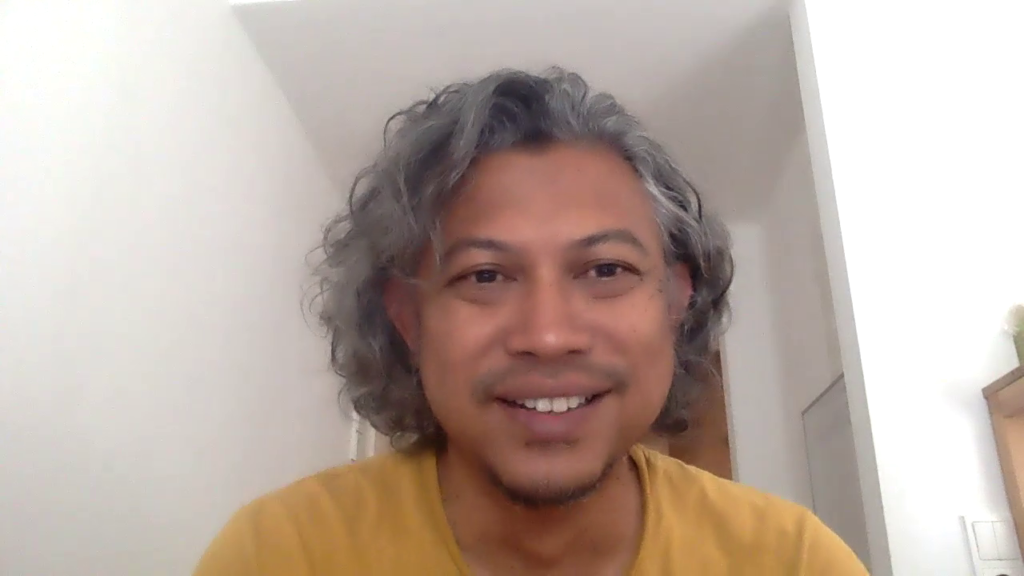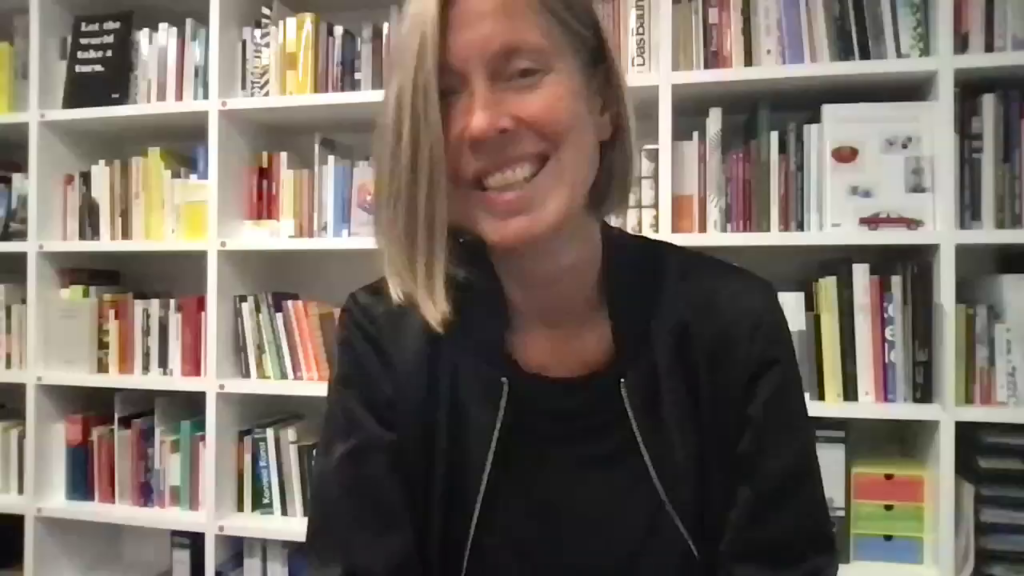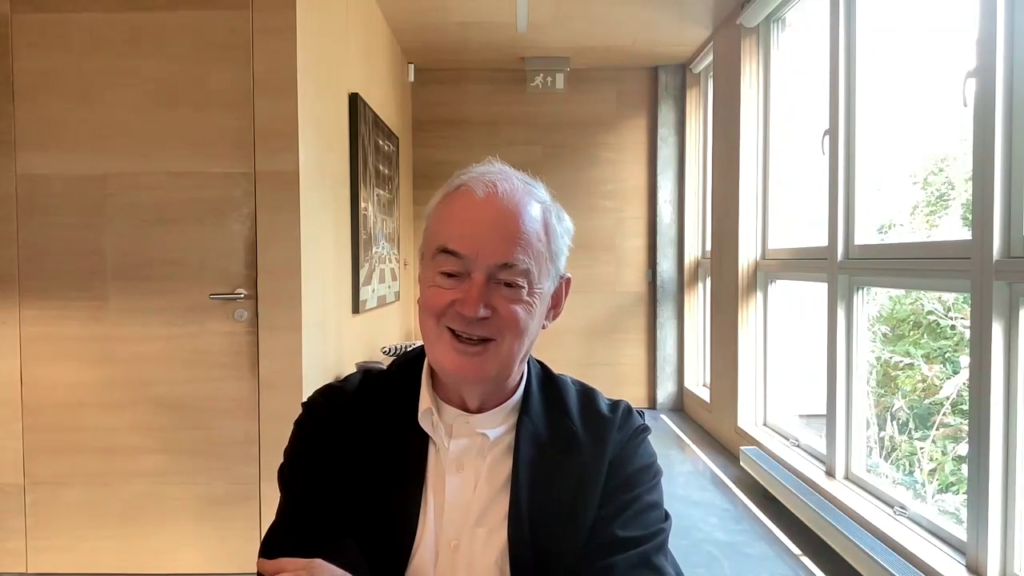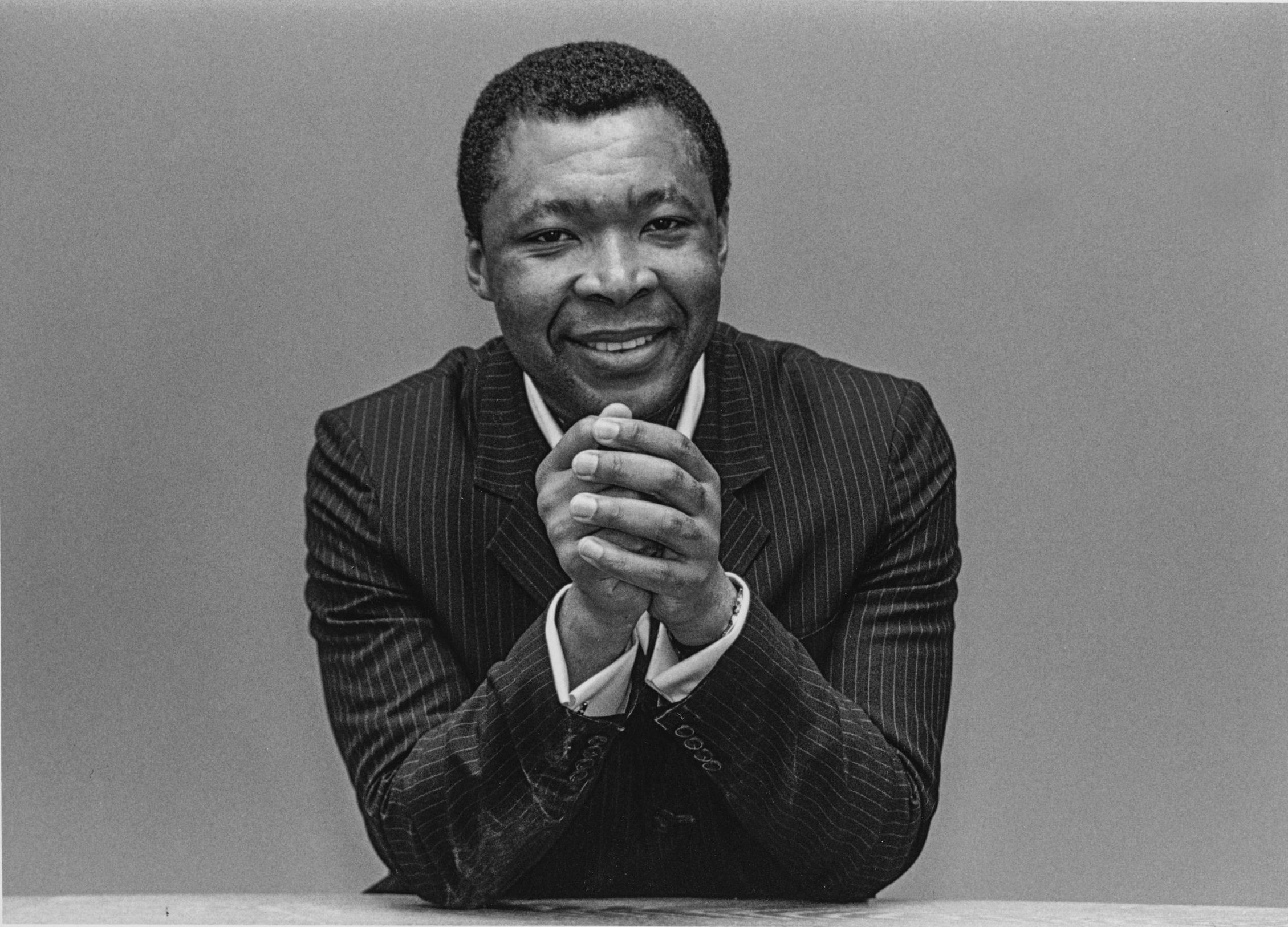Platform6documenta fifteen
The Past in the Present – A Conversation between Co-Curators and Team of Documenta11 with Artistic Directors of documenta fifteen – Part 2
CloseThe Past in the Present – A Conversation between Co-Curators and Team of Documenta11 with Artistic Directors of documenta fifteen – Part 2
Second part of the Conversation between the team behind Platform6 and members of ruangrupa, curatorial collective behind the documenta fifteen. The conversation took place on zoom on August 27th, 2021, with Mark Nash joining from London, Angelika Nollert from Munich and Ade Darmawan joining from Kassel.
Edited by Vladimir Seput, UC Santa Cruz
Ade Darmawan:
To continue with where we concluded with our previous conversation, I wanted to say that in the Indonesian context, we are trying to find liberating ways in regards to schooling and educational models. It’s important to find new ways for production and distribution of knowledge so we are now working on it here in Kassel. There are a lot of initiatives, collectives and spaces that really challenge that. We cannot avoid the role of creating and producing knowledge, and to look into how the histories have been written and archives created. Those issues are resonant with many practices that ruangrupa is committed to, but also other collectives in Indonesia and other parts of the world.
At the same time, we are trying to create a different model of economy which is connected to the history I was talking about earlier and the way that the economic models were run in the past. That’s why lumbung is not only a collective model but also an economic model.

We just finished with research and an initiative in Indonesia in which we connected with more than fifty other models there and then we slowly built some new ones collaborating with those back home. Each locality deals with different resources. For example, we come from Jakarta so how we see the resources is completely different from the way someone will see them on another island in Indonesia. And spatial context is also always different, of course. So all of that has its own, quite complex expression that one needs to negotiate.
It’s also interesting to see how others are approaching those issues. For example, Fondation Festival sur le Niger from Mali has their own collaborative way of working called Maaya entrepreneurship which is really similar to lumbung, but focused on the organisation of a music festival and the economy behind it.
Mark Nash:
That’s very interesting because one of the questions that Angelika and myself were discussing earlier was the role of sustainability in your project.
Angelika Nollert:
There are two aspects that ruangrupa members mentioned here that I would like to go back to. One of them is when you said that it's a journey. I think there are different levels of journeys, the one is the journey of your group, of ruangrupa. As Farid mentioned earlier, Kassel is one of the stops on that journey and then you go further on. It’s also at the same time a journey for the documenta exhibition, from one to fifteen. You spoke about different localities, but I would also mention the importance of the public. So for the public it is also a journey. All those journeys come together at some point, which then happens in Kassel. How can you bring all the examples, different ideas and concepts that you mentioned, and combine them in Kassel? How can you share those with the public? We spoke about how art needs to change and it won’t be only the results that are presented; a painting, a film, but also the processes and the processes will continue. How do you plan to bring those discourses to Kassel so that the visitors can share them with you or, in the best case, learn from them? Also, will there be a publication, and can there be a publication in this instance considering that it would be a form of a result and not a process?
Ade Darmawan:
Those are the discussions that we had as well. We have a very sensorial approach to our work and it’s always a challenge to exhibit ruangrupa. We learn a lot from the experience of working in the context of limited time and space, like in the case of Documenta and its one hundred days. The question is to think beyond that, beyond that representation. So the strategy is to make Kassel local, to blur the frame between local and global. Our method is to spend time with people in space, we do that in Jakarta and now we are doing it here in Kassel. We want to have different concepts of understanding or misunderstanding of the place. We don’t see Kassel as a neutral place. For example, with ruruHaus, Reza and Iswanto have been living there with their families for one year now, making friends, creating networks. Spaces have never been just venues for us. At the same time, the representational mode will be a challenge but we will try to find strategies for dealing with it. The question arises of what is the meaning of documenta, and what is the meaning of being in documenta, those are the two problems that we are addressing. And how to translate a certain practice into this new context? That’s when involving the public becomes really important because they should be part of this new knowledge production model. We could say that we harvest things during this journey; poetically, politically, and visually. And we transfer them into something more digestible for the public. But the public is not passive, it’s participatory because it brings its own journey into the story and its own history/histories. So it contributes back to the space which it inhabits for a certain period of time. One of the things that we are working on now is transforming the Fridericianum into a learning community. And it's inspired by the lumbung’s architectural structure which is created from three parts in the form of a triangle. The lower one is a social republic, social space, the second one is a living space and the third one on the top, which is also transcendental, is a place where the harvest is stored but it is also a praying space. We are going to install that triangulation in the Fridericianum. But not just the Fridericianum, other locations will also be occupied by artists and collectives and function as living spaces where the knowledge exchange, collaboration development and mutual learning will be happening.
Angelika Nollert:
We know that the public is often very traditional and is, in that sense, longing for something to see. And in running the museum we often say that we don’t always focus on the materialisation of the art but on the process itself. However, the public can find that confusing, that lack of finalising the process. As Ute pointed out, I am sure that these traditional questions will be brought up around your exhibition as well. The challenge will be to transform these expectations into a different kind of public awareness, when the understanding of a different idea of the exhibition emerges. It’s good that you are organising the classes and the school so that the people who join can have a different experience. That raises another important question, namely how long should the visitor be at the exhibition? Because it seems to me that it would be the best to be there for a certain period of time, and not just for a few hours like the ‘normal’ visitor would do. One could then stay for a week or two. Then the idea of visiting the exhibition would also change.
Ade Darmawan:
Yes, absolutely.

Angelika Nollert:
Of course, I am very interested in the documenta15 but I don’t know if I will have time to stay for two weeks (laughter). Which brings us to the question of process, how can you share the process for visitors who will come two or three times to see the exhibition? So how does one bring the ideas that you wish to convey closer to the people?
Ade Darmawan:
We are now in the final stage of our process with most of the artists and collectives chosen. We need time to introduce our ideas to the public. And we are trying to change the way we communicate with the press, and not be secretive about our process and wait for the opening day to reveal the exhibition. So communication is also one of the key elements when talking about the relationship to the public. These stories are going to be experiential rather than symbolic and we are trying to find a way of communicating that. The visitors will have to lose something, they will have to think differently, not thinking just about one thing but about a set of stories, and understand some of them only partially because there is no one whole that would be completely understandable. We are also expressing all this in forms that are more solid, such as publications, radio, website or educational programme that we see more as a cyclical process. And I think that there are going to be many spontaneous in situ collaborations so we will work on how to effectively programme that.
Angelika Nollert:
I think that we are all aware of the changes that are happening in the presentation of the exhibitions and I am wondering if we should also think about the language that we are using, and if the vocabulary should adapt. I think that it’s not really accurate to say that the documenta is an exhibition, or not just an exhibition, something that we already faced in Documenta11 because of the different platforms there. The question is then if we should continue using the expression exhibition anymore, or should we find a more appropriate name for it? Should we call it a cycle, or a stop? We have to think about our vocabulary in naming different structures and ideas, and to represent that change in the language.
Ade Darmawan:
We also struggle with that. And we are slowly developing a new vocabulary, new grammar to name a certain practice. Both the institutions and the public are struggling with some pre-existing definitions and our thinking is coming from a different cosmology. Even the terms art and artist can mean different things in different places. In Indonesia, being an artist in a way that is understood here, as a profession, is fairly new, and the whole machinery behind it started to develop relatively recently.
Mark Nash:
I think that Angelika, in some ways, summed up the whole series of questions around vocabulary and the ruangrupa’s project is really going to change the vocabulary in which we think about art and exhibitions. When thinking about the two documenta, Documenta11 and documenta15, it is clear that there are lots of connections but there are also lots of differences.

I think that our Documenta fits into a recognizable concept of an exhibition plus all this discursive material. ruangrupa’s Documenta has the potential to be seen as more radical in a formal sense.
Ade Darmawan:
And how do you see Documenta11 now? I am interested in your perspective on its aftermath.
Mark Nash:
Its aftermath is quite long I would say, and that's why we came up with the project to reflect back over the last twenty years, because otherwise, although we have our individual memories and practices, the institutional memory or the memory of it as an institution, gets forgotten. We felt that those debates should still be continuing so we tried to stimulate that again, and from that came the platform6 website project. But the afterlife of the exhibition, I think, has penetrated the art world discourse and the academic discourse. As I said, your exhibition has the potential to help us formulate those questions even in a more radical way, because you're going to the roots of the debates about what is art.
